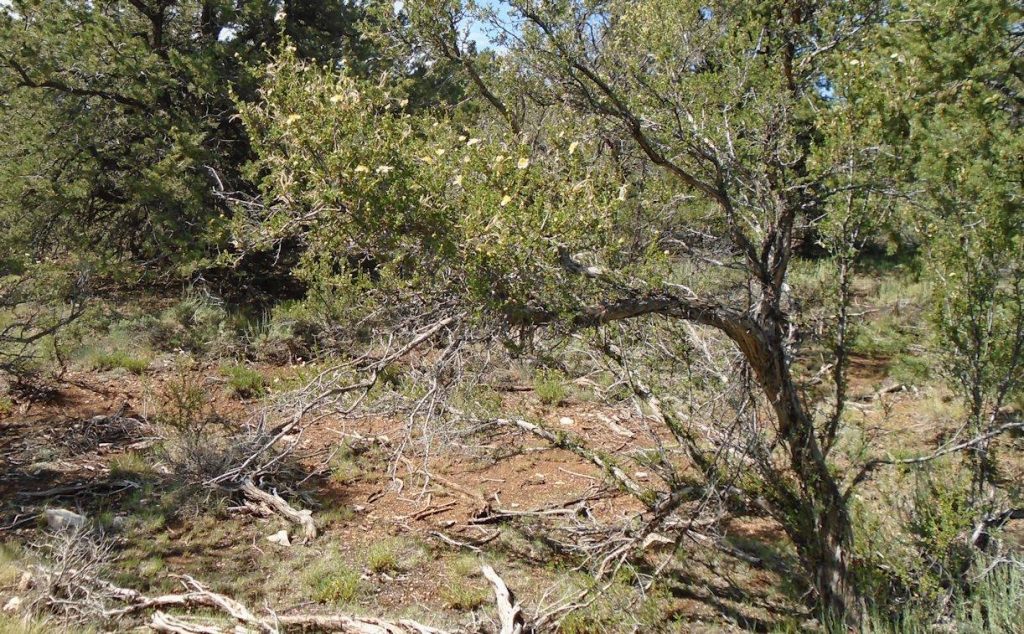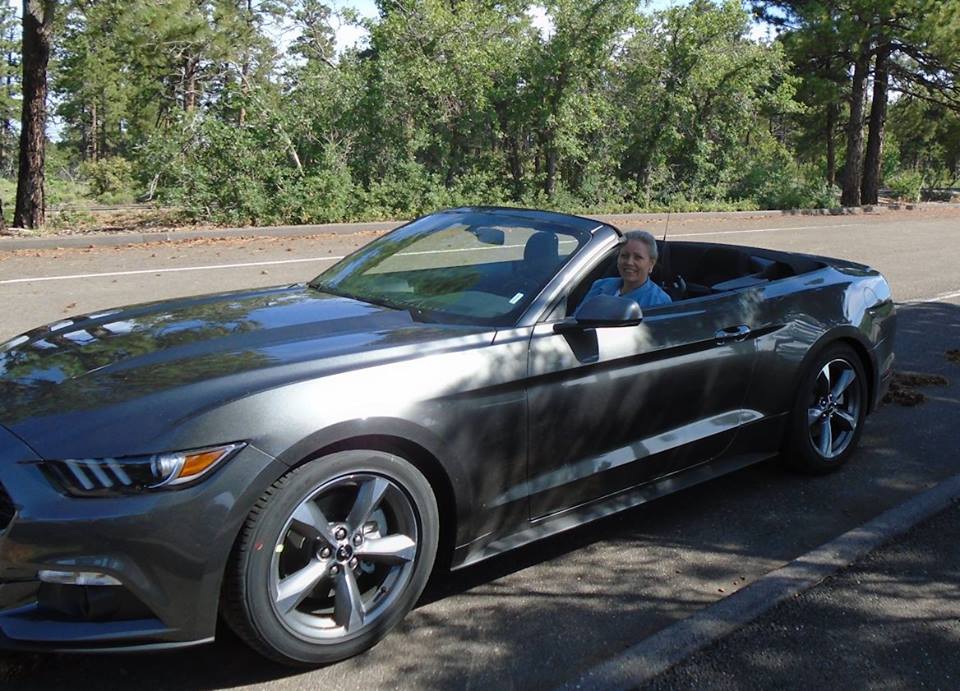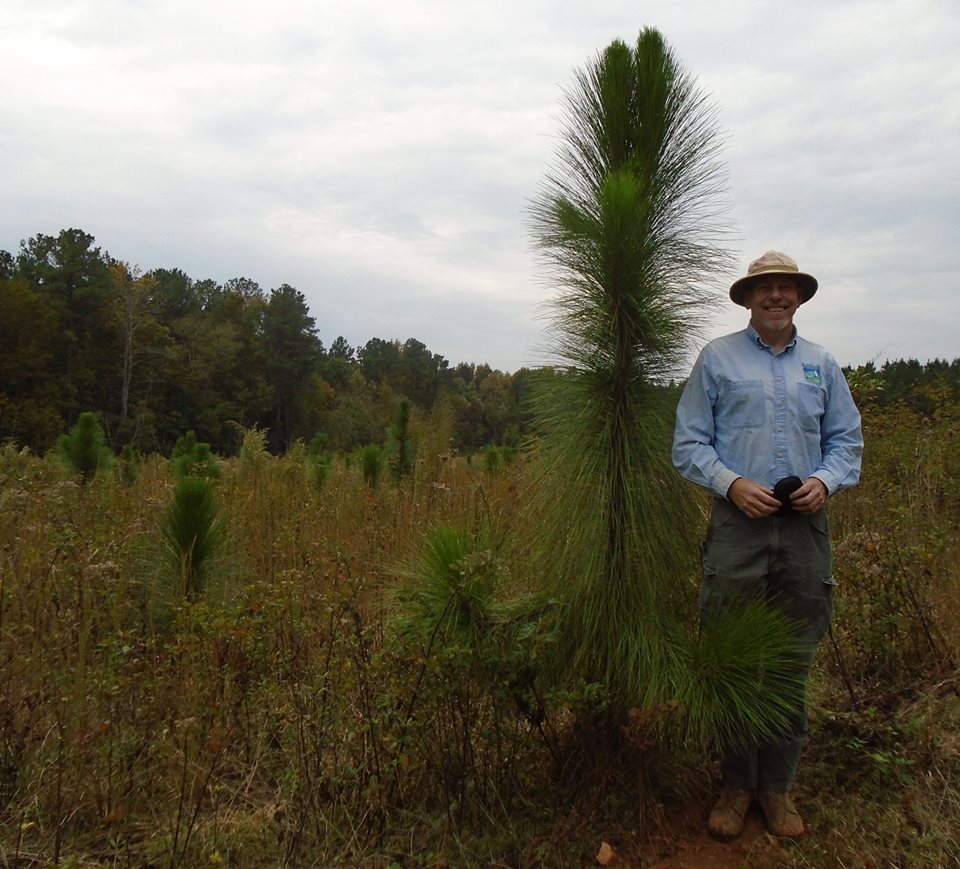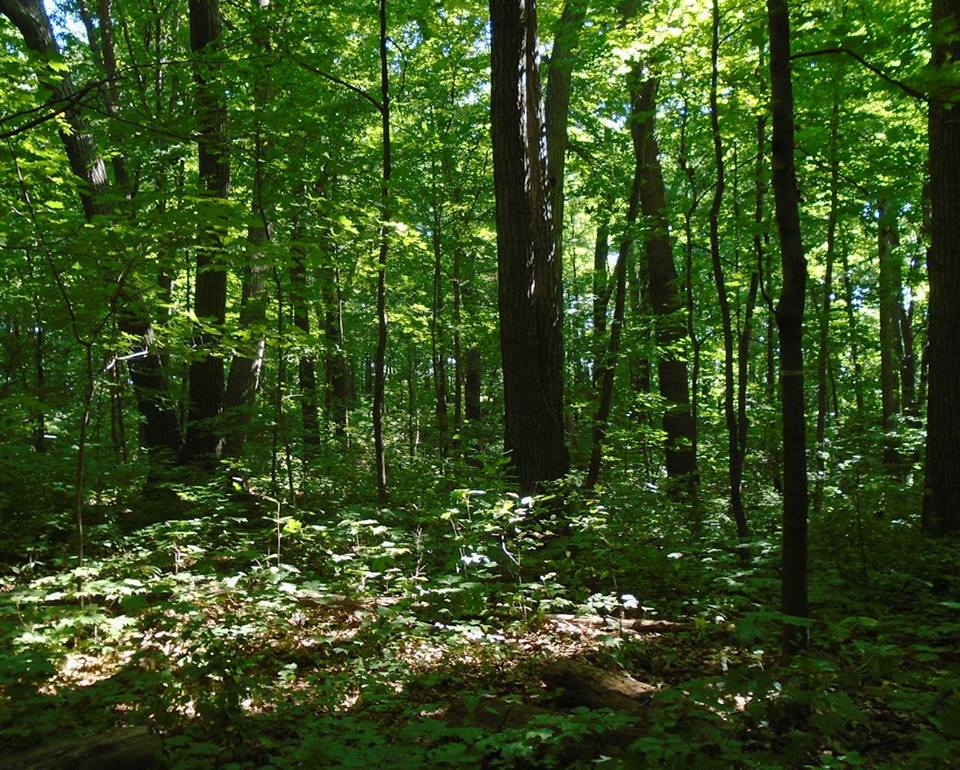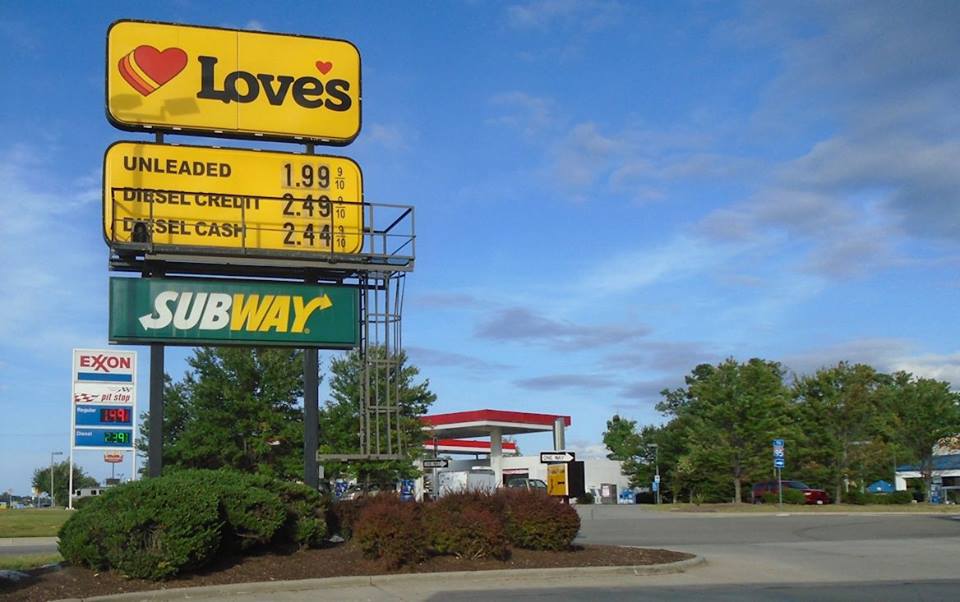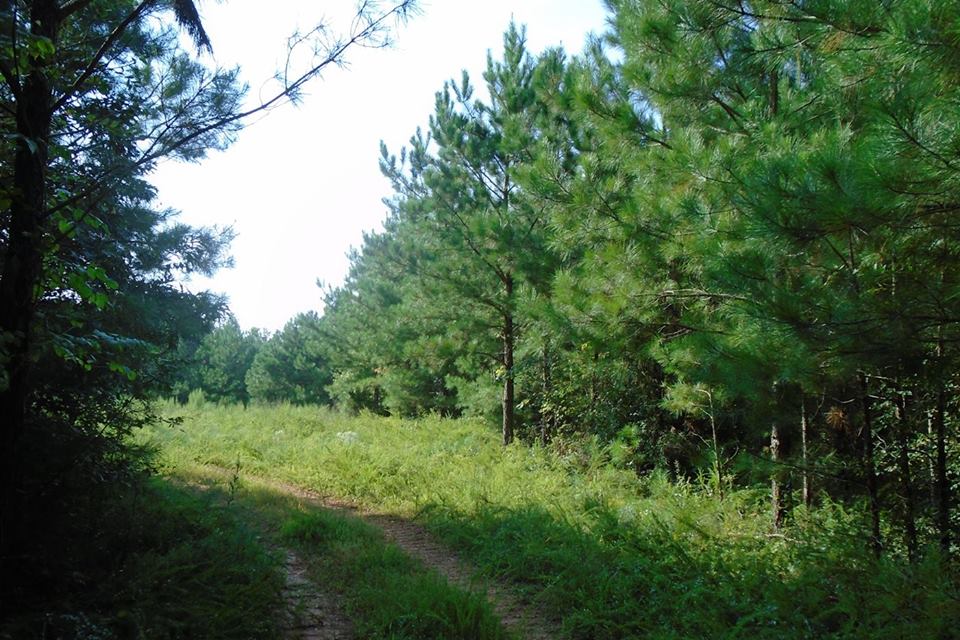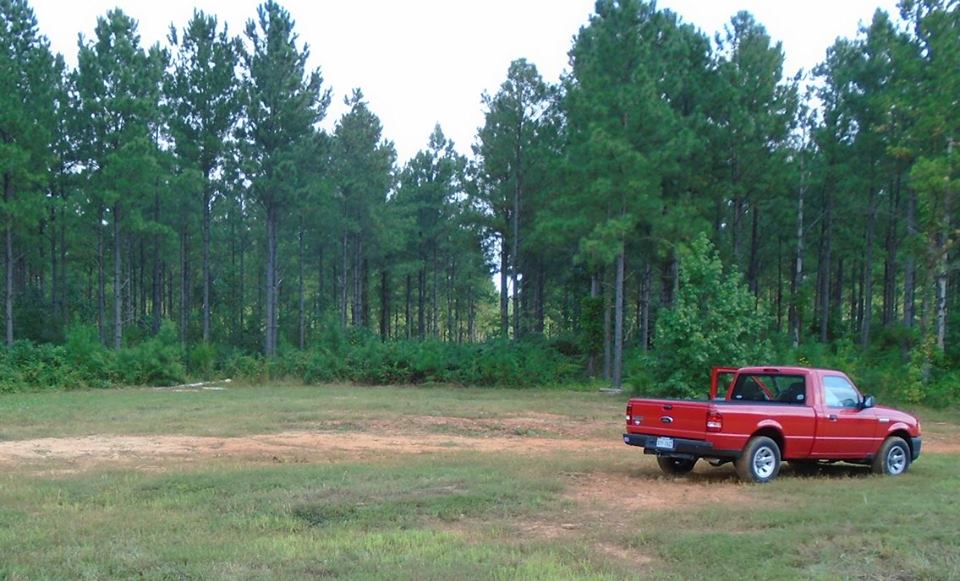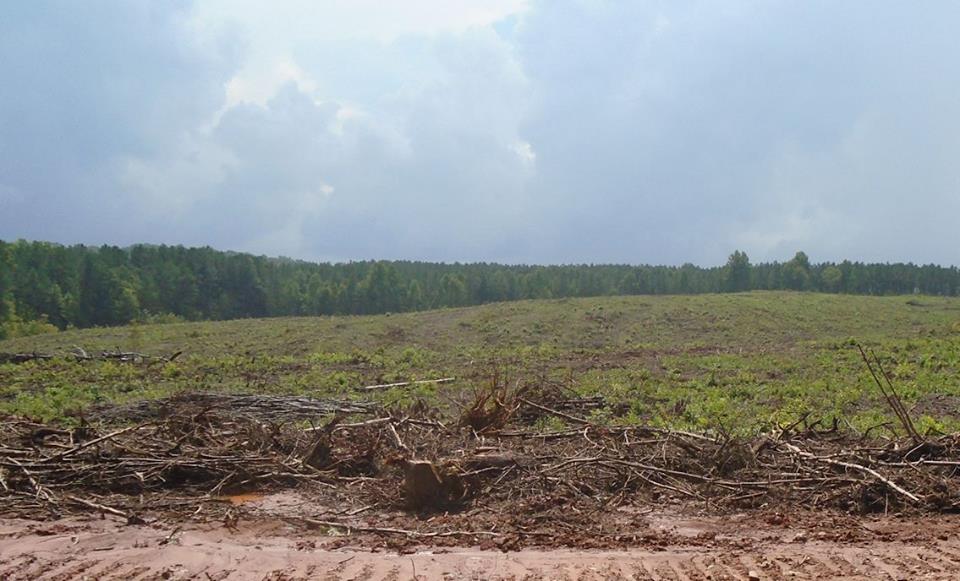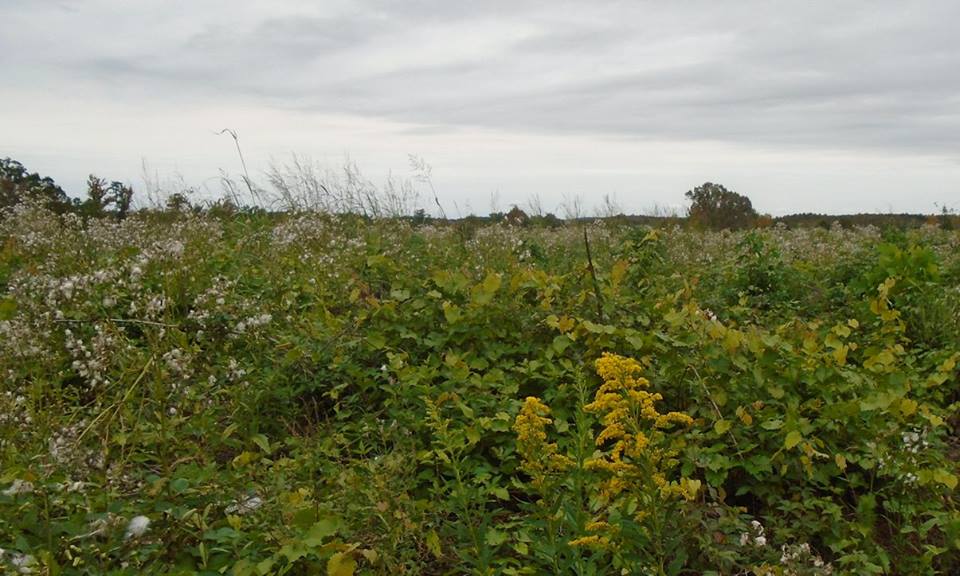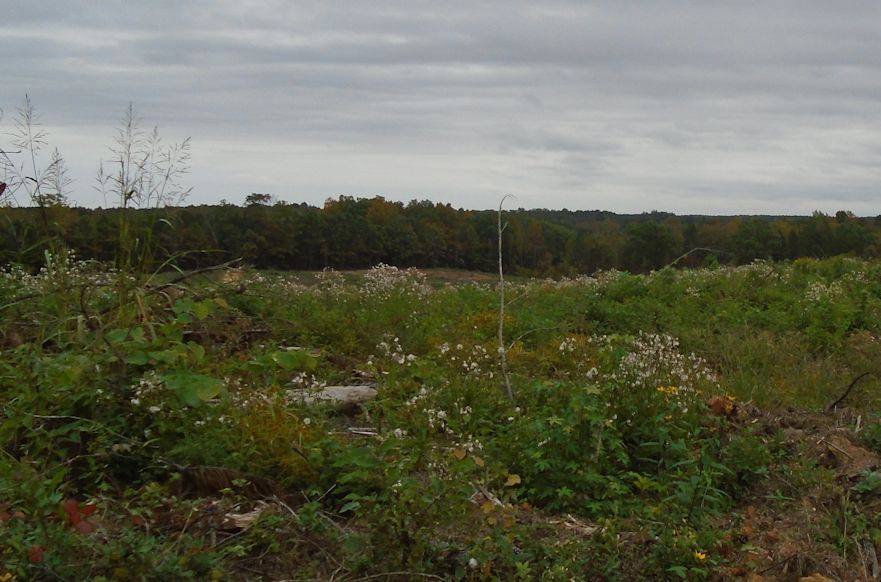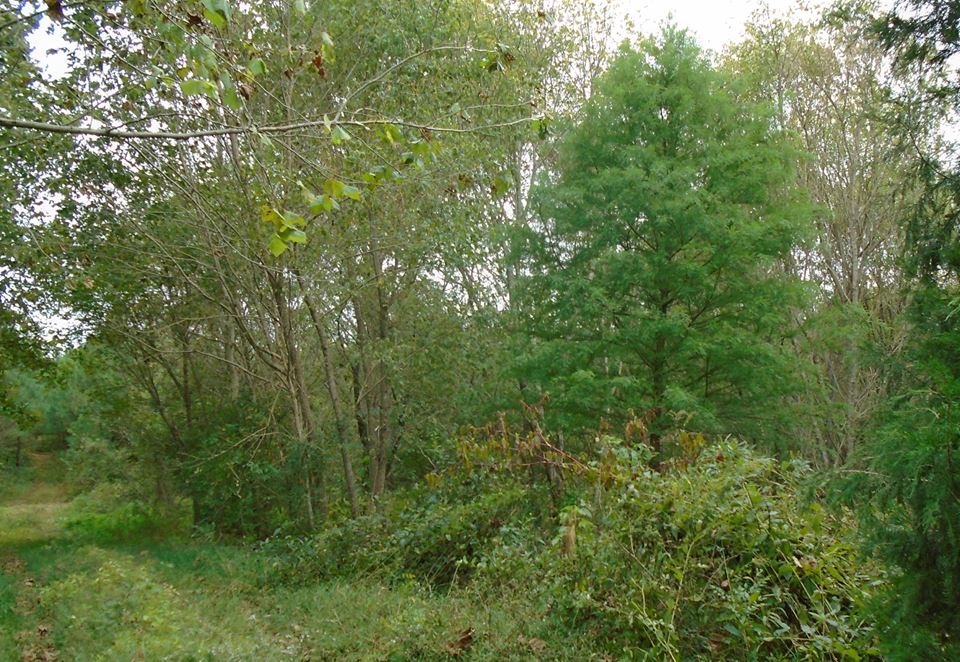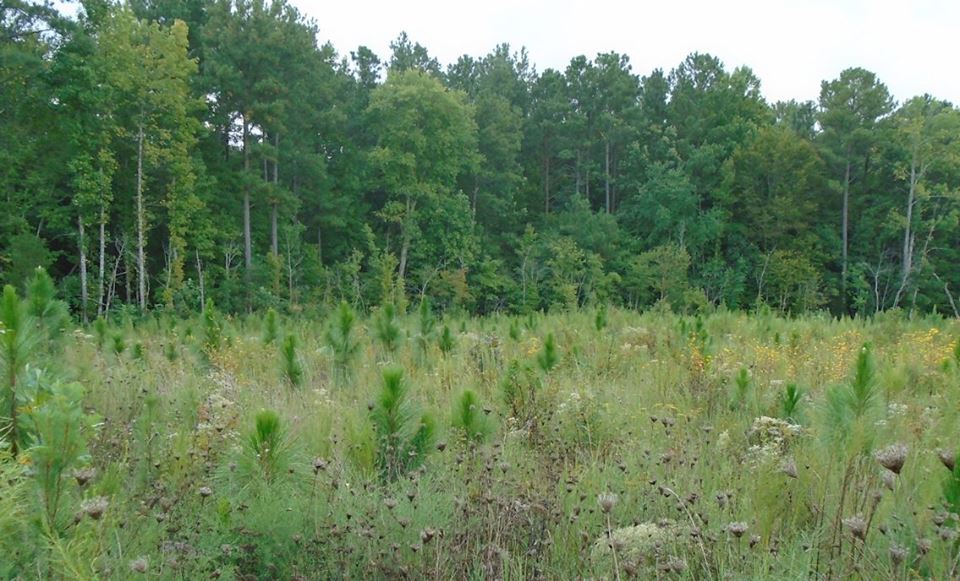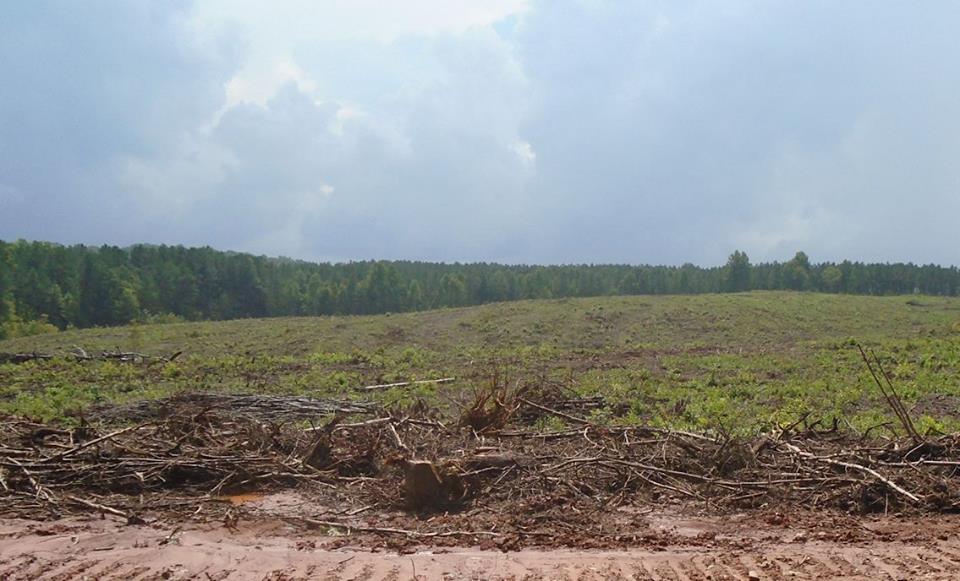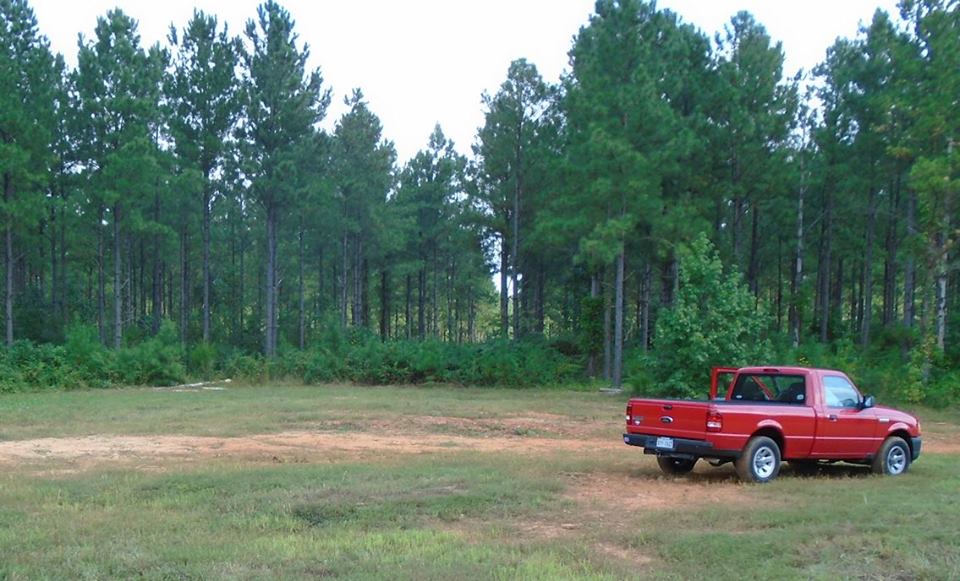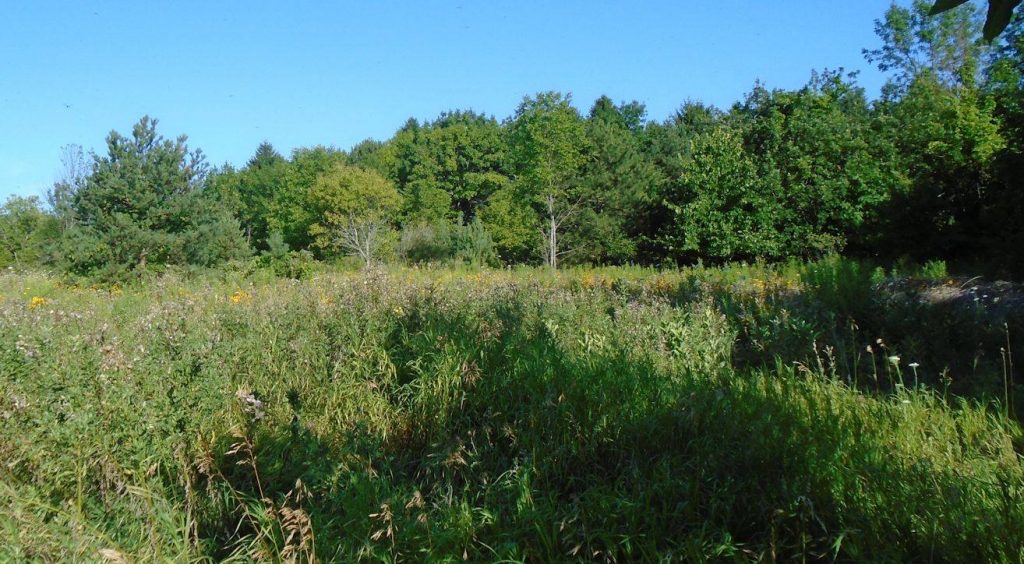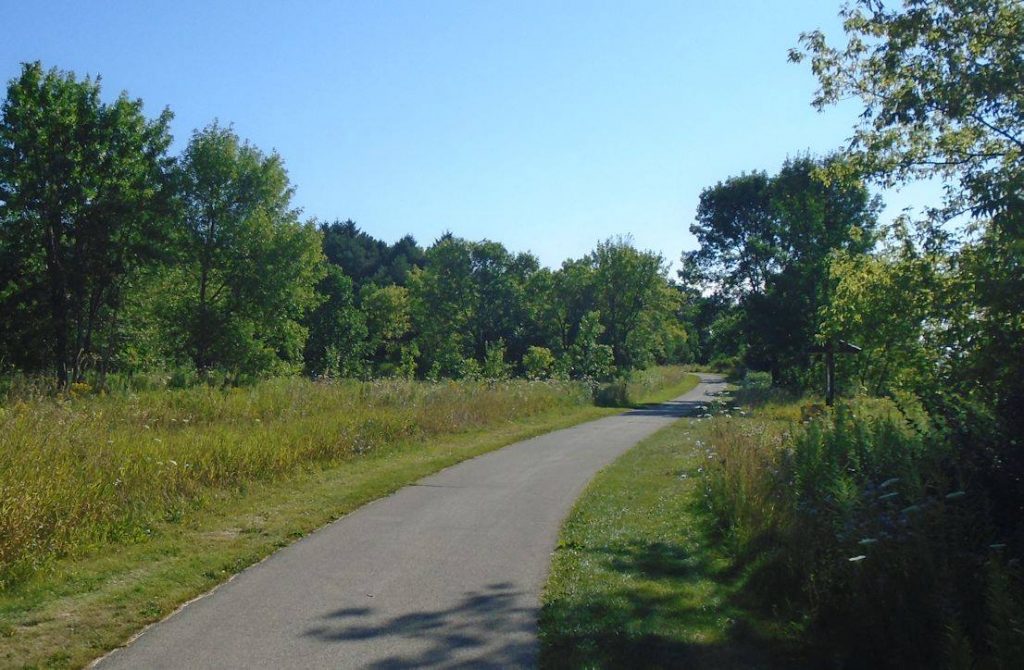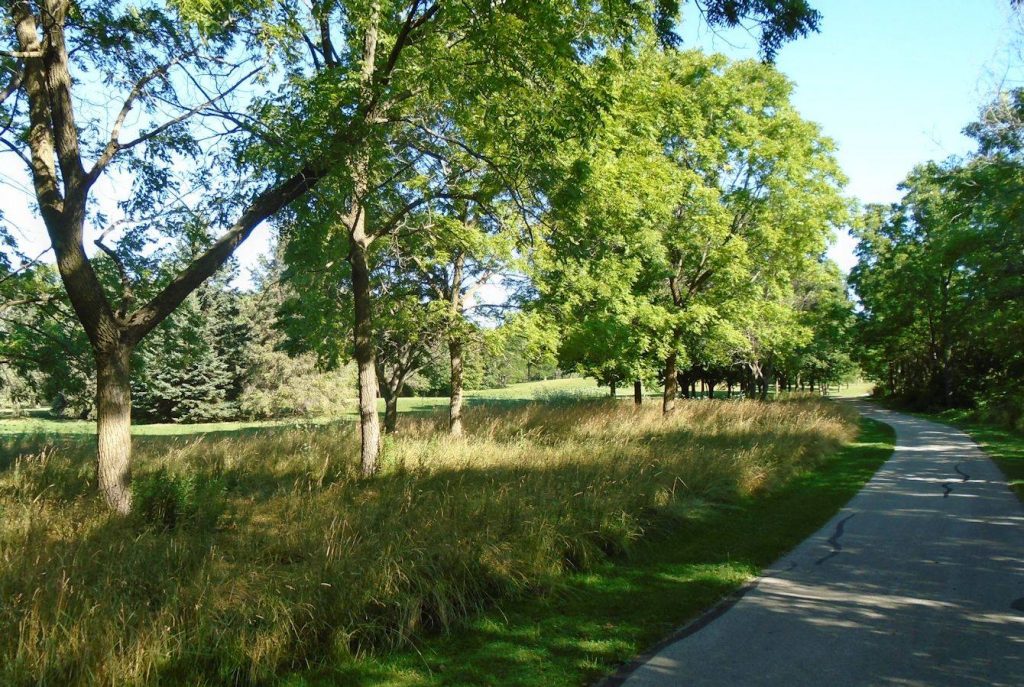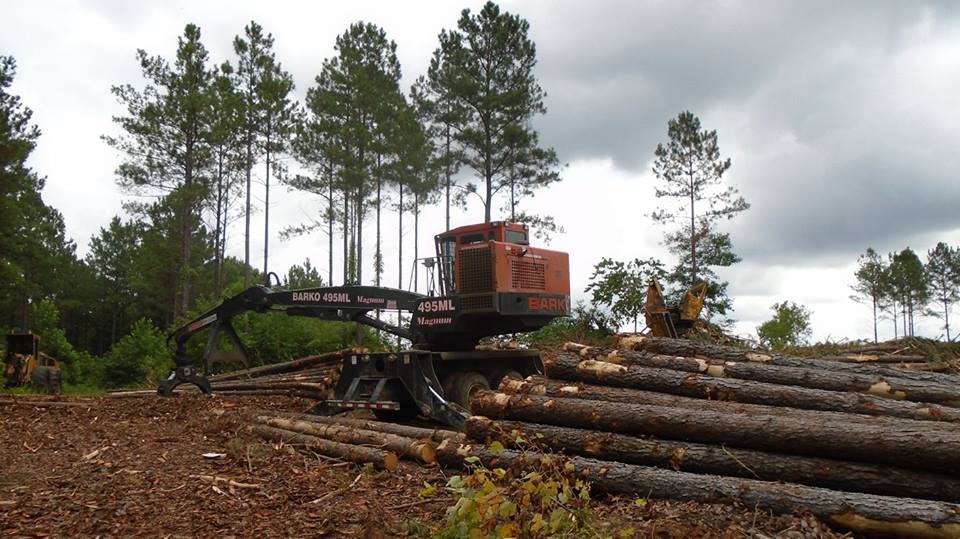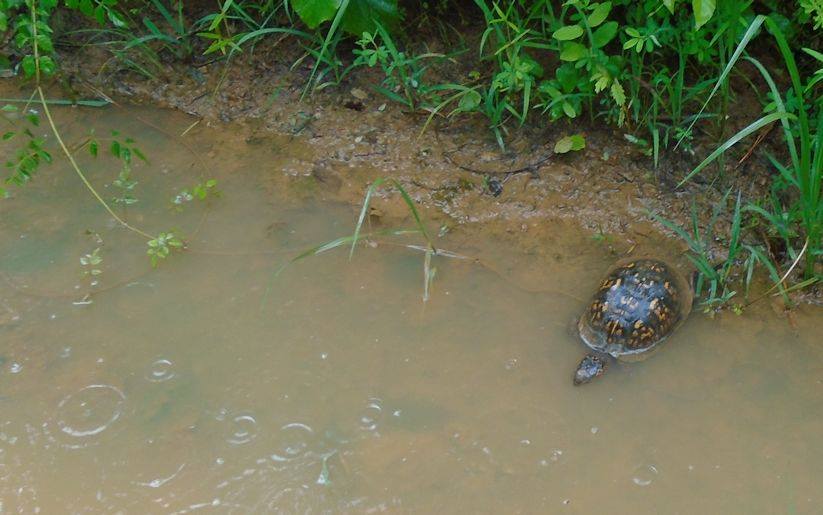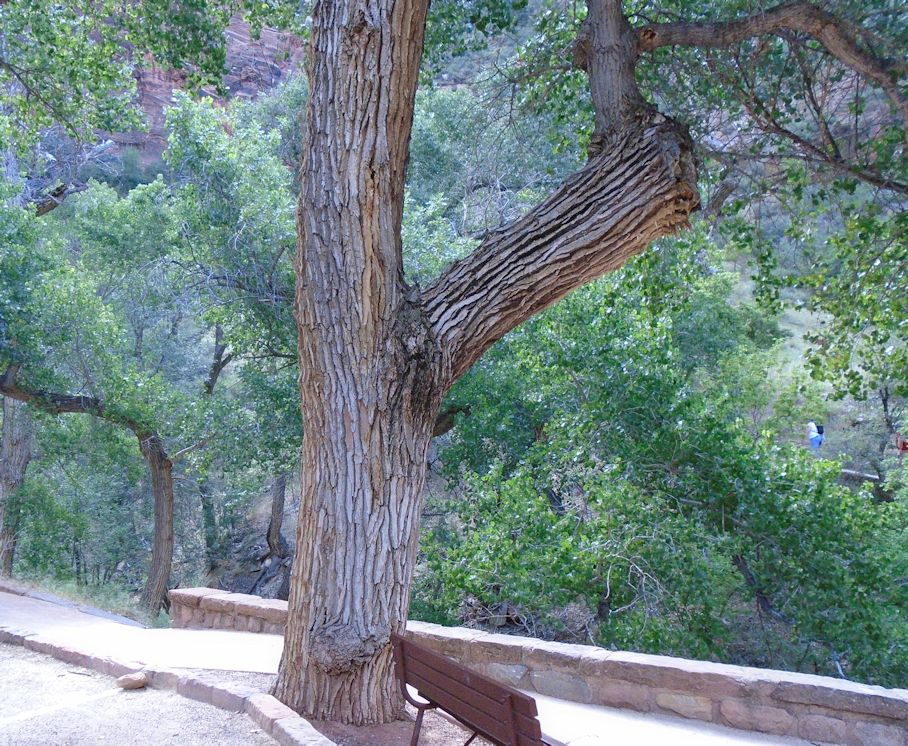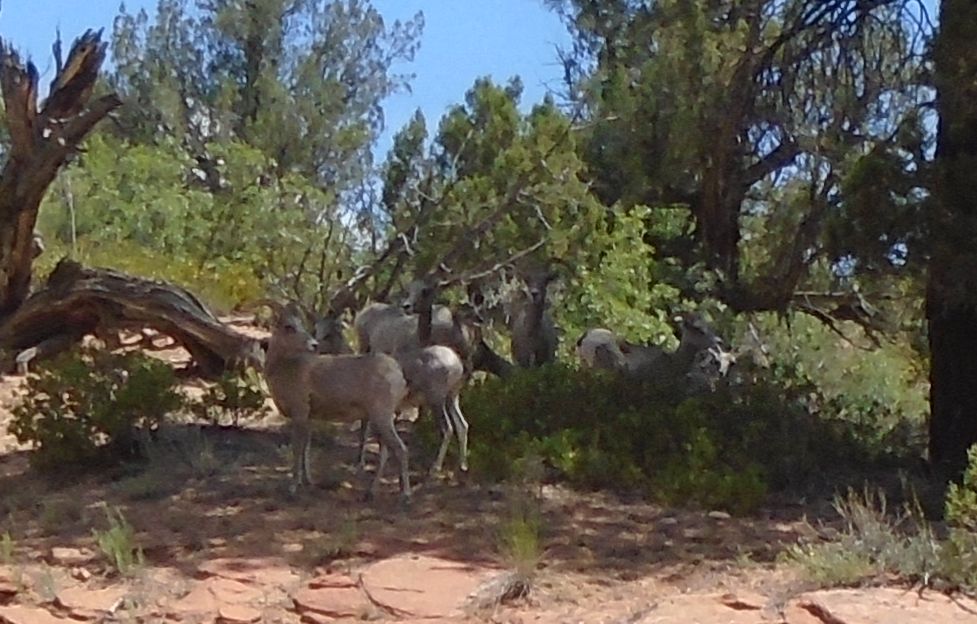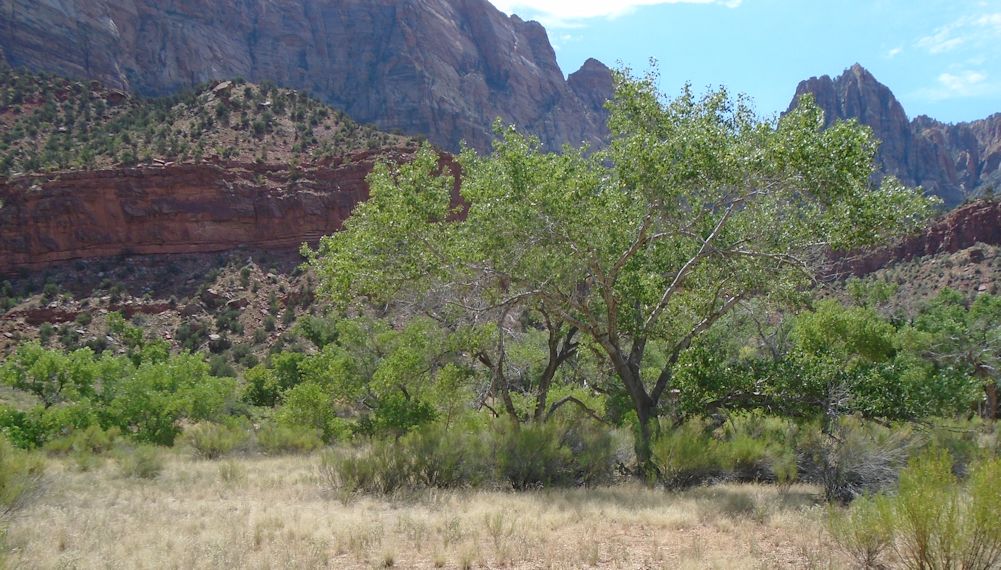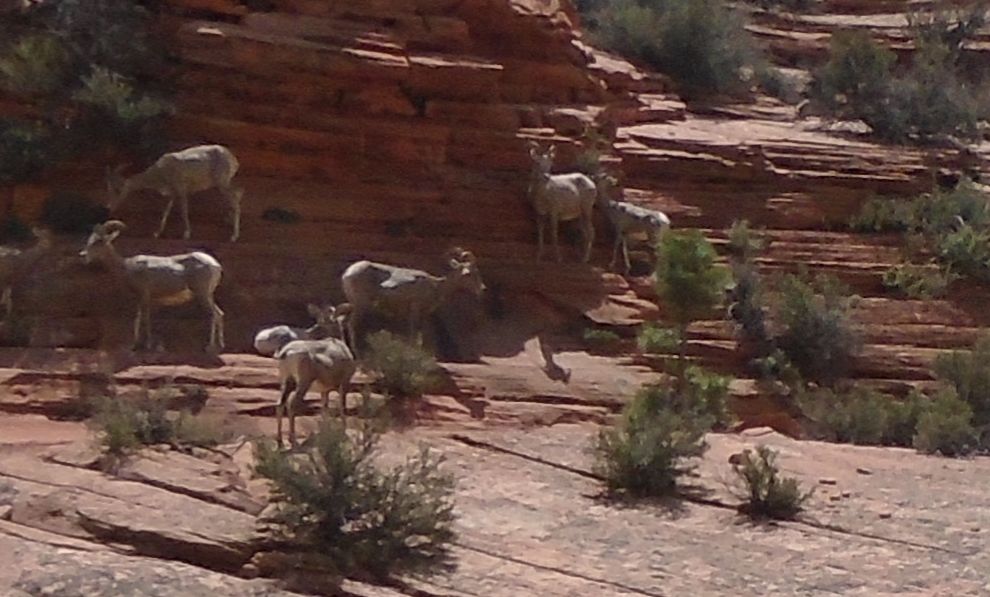I took Mariza down to the farms to show her around and have a look at the longleaf plantation. The longleaf are doing extraordinarily well. The one I am standing near is one of the bigger ones, but most are well along. I am 6’1”, so you can see the comparison. These trees were planted in 2012. Not bad.
Farm visit October 2015
More from the farms. Mariza and I also looked at the recent cut over. Not much of my clover has come up near the roads, but I was surprised how much had grown since the cut only a few months ago. Lots of the plants are from plants whose seeds blow easily in the wind; others are from roots long shaded int eh old forest or dormant seeds. We will plant 30 acres of loblolly, 15 acres of longleaf and an acre of cypress early next spring. I also have included a photo of the bald cypress I planted a few years ago along one of the streams It is one of my “pet” trees and I take special care of it.
What is native?
Our bacon and eggs breakfast comes to us thanks to “invasive species.” Pigs, cows, chickens, honeybees, wheat, and apples (Johnny Appleseed was a wholesale purveyor of invasive species) all came from somewhere else and displaced natives. The problem with invasives comes when they disrupt long-established relationships in ways we find harmful. Our tree farms are full of invasive species, wanted and unwanted. Maybe we plant clover to protect soil after a harvest. That same clover is invasive in other circumstances. We fight invasive species like kudzu, multiflora rose and ailanthus, but recall that they came with the enthusiastic support of experts and often through government programs.
We need to develop a more nuanced view of invasive and native. Native is not always better or even really native. Much of the loblolly that we plant in Virginia, for example, comes from genetic stock “native” farther south, modified by select breeding and scarcely resembling the multi-branched, twisted natives of times past. Human activity has changed the game. Virginia’s environment today is far different from 1607. Natives exquisitely adapted to old Virginia may be less appropriate in the future.
This does not imply that we should be unconcerned about invasive species. Their proliferation is the single biggest threat to our forests. Global commerce is increasingly bringing species long-separated into intimate contact, sometimes with catastrophic results. We must be vigilant against the introduction of pests, but know that nasties like longhorn beetles, emerald ash borers, Formosan termites and wooly adelgids will continue to slip through. The rate of natural adaptation is too slow to cope with the rapid introduction of exotic species and altered environments. Humans will need to step in to move some species to new “native” range and work with breeding, even genetic modifications, to protect important species from threats unknown in their earlier evolution. A good example is an American chestnut resistant to the blight that killed whole forests early in the 20th Century; we can restore the tree in its former glory with minimal modification, rather than wait thousands of years for natural selection to produce something else.
Let’s talk options. “Natural and native” is not an option except in isolated areas maintained – ironically – by extraordinary human intervention. “Letting nature take its course” will result in a mess of invasive species in unsustainable and often harmful relationships. Conversely, overactive human management will quickly demonstrate the limits of our wisdom. Recall the kudzu and multiflora rose are with us today because of somebody’s big ideas. There is no single plan. The best choice is what good land managers do: work with natural processes but recognize that the very nature of our work changes them. It’s an iterative, adaptive learning process with a goal of dynamic sustainability that strives not to avoid change but to make it reasonably predictable and benign – simple to say; hard to do. It requires patience, persistence and humility. Details are unknowable in advance, since information is discovered only through experience and often has only local or temporary applicability. It is more a process than a plan, one that relies the intelligence, imagination and innovation of landowners, firms, researchers and government agencies, knowing that none of them will have the answer, but that the many answers will sustain our beloved Virginia ecosystems. Some will not be native.
September 2015 Forest Visit Brunswick County
We went down to the farms to plant clover on the new cut over, especially on near the trails, where there is more bare dirt. I was surprised how much had grown up by itself since the land was cut in July. Some is hardwoods sprouted from roots, but other plants are coming up from long-dormant seeds. The clover will hold the soil, provide nitrogen and be good wildlife forage. We will plant new trees in spring, about 400 per acre, thirty acres loblolly and fifteen longleaf and one acre of bald cypress. Loblolly will also seed in from the neighboring trees. In fact, left to their own devices, the loblolly would fill in by itself. It would take a little longer and we would not have the same quality trees, however.
Espen, Alex and Colin helped throw the seed. We did it by hand mostly as a form of performance art. I wanted them to be a part of the regeneration. Probably by the next time we do it, drones will handle much of the job.
I also did some work on our longleaf pine experimental plot. We have about five acres planted in 2012. The trees are doing okay. They have moved out of the grass stage (longleaf look like tufts of grass sometimes for a couple years before the bolt out) and some are now around eight feet high. They did a very good job o site preparation, so there is not too much competing hardwood. I did have to take down a couple dozen volunteer loblolly, however. It is kind of sad for me. If those same trees were growing a little distance away I would be delighted to have them.
It is hard work and I am getting a little too old and weak. The next day there were few places on my body that didn’t hurt. I still do the work with hand tools. I suppose I could succumb to modernity and get tools powered by something other than my aging and now aching muscles.
The first picture shows the little longleaf, now in their third year on site. Next is the new clear cut, 46 acres that we will plant next spring. After that are 19-year-old loblolly across from the longleaf. They were thinned in winter 2010-2011 and I think we will do a second thinning in 2017. The first thinning did them a lot of good and the forest is very robust. The last picture is our place on SR 623. The wildlife meadow has quail. Those tree are 11-years-old loblolly. When we got the place, it looks a lot like that clear cut. You can see the forest evolution in the pictures.
Forest visits September 2015
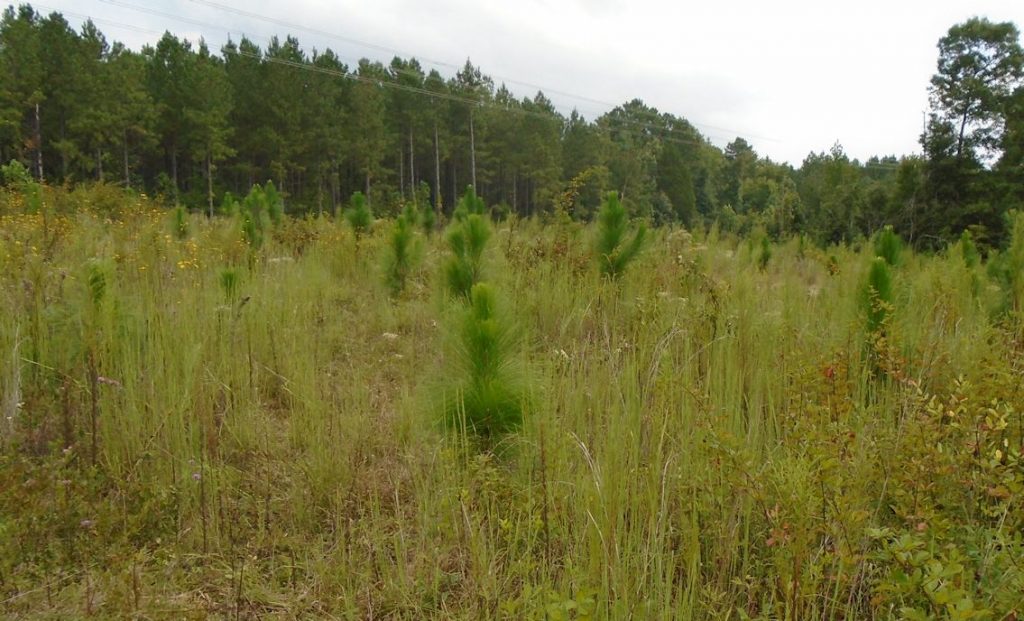
We went down to the farms to plant clover on the new cut over, especially on near the trails, where there is more bare dirt. I was surprised how much had grown up by itself since the land was cut in July. Some is hardwoods sprouted from roots, but other plants are coming up from long-dormant seeds. The clover will hold the soil, provide nitrogen and be good wildlife forage. We will plant new trees in spring, about 400 per acre, thirty acres loblolly and fifteen longleaf and one acre of bald cypress. Loblolly will also seed in from the neighboring trees. In fact, left to their own devices, the loblolly would fill in by itself. It would take a little longer and we would not have the same quality trees, however.
Espen, Alex and Colin helped throw the seed. We did it by hand mostly as a form of performance art. I wanted them to be a part of the regeneration. Probably by the next time we do it, drones will handle much of the job.
I also did some work on our longleaf pine experimental plot. We have about five acres planted in 2012. The trees are doing okay. They have moved out of the grass stage (longleaf look like tufts of grass sometimes for a couple years before the bolt out) and some are now around eight feet high. They did a very good job o site preparation, so there is not too much competing hardwood. I did have to take down a couple dozen volunteer loblolly, however. It is kind of sad for me. If those same trees were growing a little distance away I would be delighted to have them.
It is hard work and I am getting a little too old and weak. The next day there were few places on my body that didn’t hurt. I still do the work with hand tools. I suppose I could succumb to modernity and get tools powered by something other than my aging and now aching muscles.
The first picture shows the little longleaf, now in their third year on site. Next is the new clear cut, 46 acres that we will plant next spring. After that are 19-year-old loblolly across from the longleaf. They were thinned in winter 2010-2011 and I think we will do a second thinning in 2017. The first thinning did them a lot of good and the forest is very robust. The last picture is our place on SR 623. The wildlife meadow has quail. Those tree are 11-years-old loblolly. When we got the place, it looks a lot like that clear cut. You can see the forest evolution in the pictures.
Warnimont Park by the Lake
Natural succession is the way that the ecology changes over time. The textbooks usually take it from an open field or a pond to a forest. You can see natural succession in Warnimont Park in Cudahy. Around 1970, the park was mostly grass. I started to run down there about that time. I remember there were lots of thirteen-lined ground squirrels. They stopped mowing and soon wildflowers moved in, followed by pioneer trees Today, large parts are young forest. I have watched the evolution over the past 45 years.
I do wonder a bit about the future here. In SE Wisconsin, green ash are among the most important pioneer trees. With the emerald ash borer, I wonder what will happen.
The first picture is still mostly meadow I think they cut it occasionally. The second shows the running/bike path with young forest. That used to be all grass. Next is a grove of black walnut. They planted those in the 1980s. Last is one of the bluffs. If you look closely, you will see all the dragon flies. The sky was full of them. They are generally beneficial.
Harvest 2015
I decided to cut 45 acres a little earlier than the prime time because I am eager to replant. I will not live forever and I want to have a reasonable chance of seeing my trees mature at least a little. I am looking forward to watching the forest grow. We have about 90 acres of 28 year old pine. Usually, we would let them grow another five years or so. But I cut half for the reasons above. I will let the other 45 acres grow another five years.
In September we are going to plant red clover to cover the ground and provide some nitrogen and biomass. I thought of doing sweet clover, but that can get five feet high in its second year and I don’t want it to top out my little trees. Red clover only gets a couple feet tall. I have never done this before, so I figure there will be some mistakes.
I have more or less settled (after some internal debate) to plant around ten acres in longleaf and the rest with good genetic quality loblolly. I plan to plant the loblolly far apart and count on natural regeneration to fill in the blanks.
I also put my land on the list for biosolids. It will probably be a few years before I get any.
My pictures show the harvest in process. We have had a lot of rain too. That turtle is NOT in a pond. He is swimming in my road. The last picture shows my sycamore grove. I just like those trees.
Transition zone at Zion 1
I just love to look at relationships in living ecosystems. Zion is a great place to study them, because the canyons provide micro climates and the whole thing sits on the ecological transition zone between the Mojave Desert and Colorado Plateau. Some of the rocks “weep” as water from above filters down. They keep the otherwise dry area perpetually moist.
Cottonwood ecosystems are among my favorites. Cottonwoods are just tough and resilient. They sink their roots into the moist river bank soil and grow up into the deserts. Cottonwoods do not live long, by tree standards. If you plant one for your newborn child, there is a good chance the kid will outlive the tree. They grow easily from cuttings, and many spring from sticks that just get stuck in the mud and set down roots. Subsequently, they often spread by vegetative means, i.e. not seed. This means that the trees in a grove may be genetically identical and about the same age. That is why they sometimes all die about the same time.
My pictures show cottonwoods at various places in Zion. The sign says that they are Fremont cottonwoods. I really cannot identify cottonwood sub-species, so I take their word for it. Notice the ecological importance of the cottonwood. In the top picture, the protection provides shelter for other plants. In my other picture you see how cottonwoods are sometimes half dead, but they just do not die off. I also included a picture of some mountain goats. I do not know enough about them to write a whole post, but I wanted to include them.
Fire in the forests
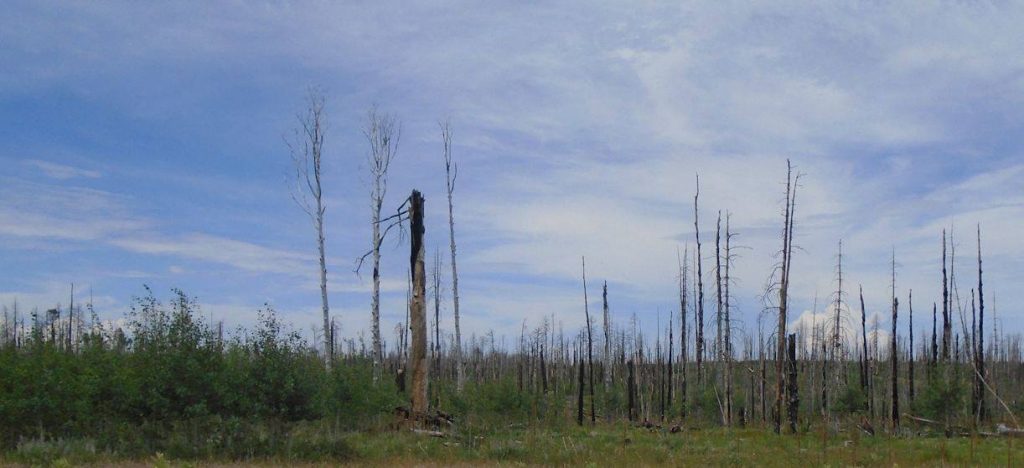
You cannot exclude fire from the forests, but you can manage it. We tried for decades to put out fires. It seemed a good idea at the time, but it changed the ecology of the forest, making it susceptible to larger and more disastrous fires. Fire is a natural part of the pine ecosystems. Only about 2% of the fires WERE intense enough to kill ponderosa pine. Recently, however, they have been hotter, due to the earlier fire repression regimes that allowed a lot of fuel build up. The forest service is now managing WITH fire rather than against it, but it may take decades to restore the forests to the stable & sustainable systems they were.
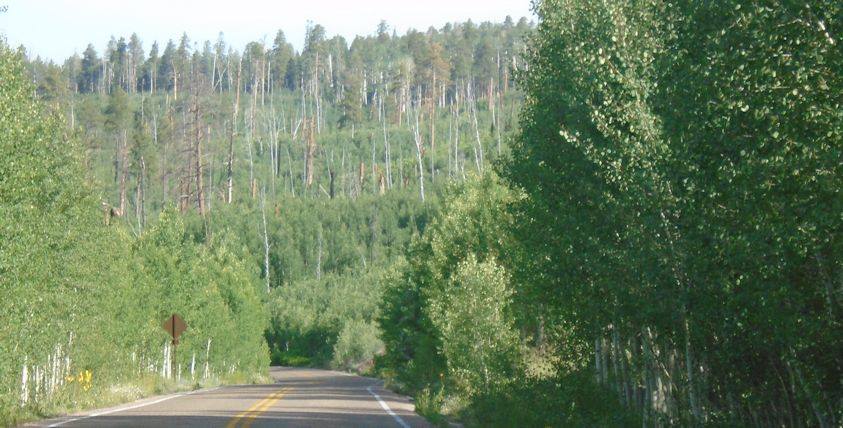
My pictures show the results of a big fire in 2000. Notice the aspens in the foreground. They need full sun to grow. Soon after a big fire, they sprout up. often from extensive root system. A patch of of trees is often the SAME tree. In the relative shelter of the aspens, gradually the pines take over again. The aspen ecosystem is short term. A pine ecosystem can persist for centuries.
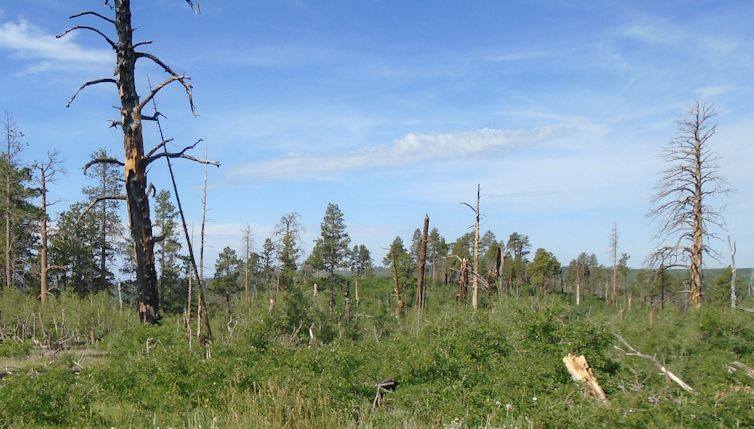
North of the Grand Canyon, it is cool enough in some places to support firs, spruces and the Canadian regime plants. These are perhaps more fragile ecosystems. They are relics of the much colder times during the last ice age around 10,000 years ago. They persist, but if they are destroyed they are often replaced by species more adapted to the now warmer and drier conditions. BTW – I am talking about warmer and drier BEFORE the climate change we now expect. Presumably the challenge will get harder.
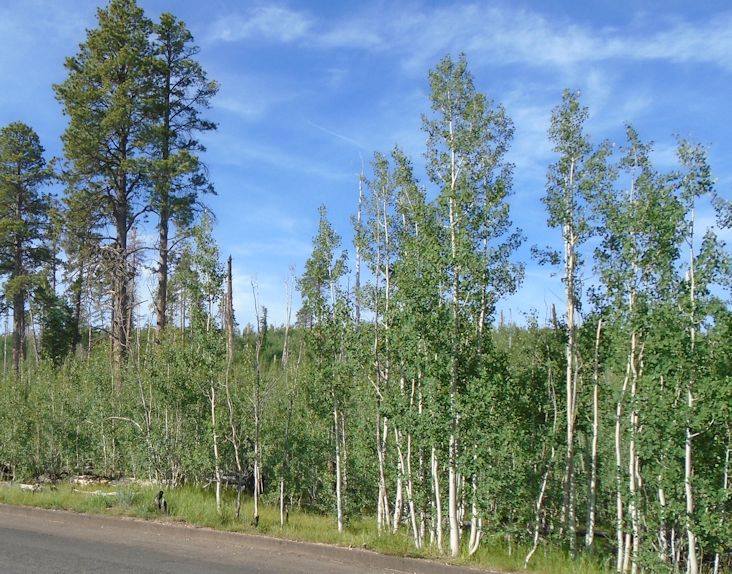
A drive along the Grand Canyon
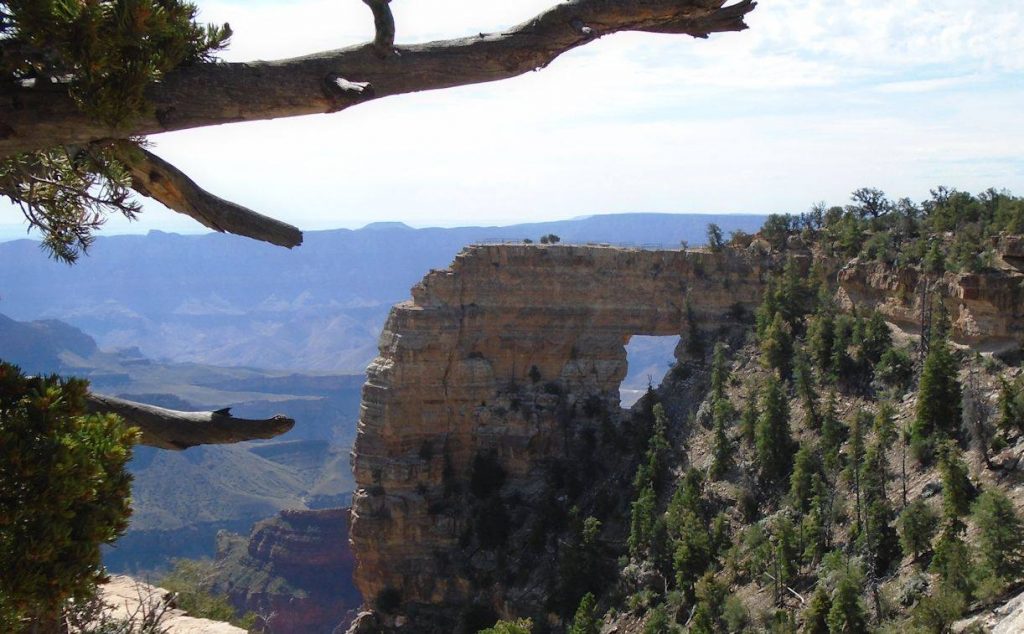 Cape Royale protrudes into the Canyon. Although it is still fairly high altitude, it is warmer and drier than the surrounding plateau. Here the ponderosa forest gives way to something more like the upper Sonora ecosystem. It features the pinyon pines, juniper and more desert-like brush.
Cape Royale protrudes into the Canyon. Although it is still fairly high altitude, it is warmer and drier than the surrounding plateau. Here the ponderosa forest gives way to something more like the upper Sonora ecosystem. It features the pinyon pines, juniper and more desert-like brush. One of the nicest things was the cliffrose, shown below. They are not attractive to look at, but they have a wonderful scent. Mixed with the juniper and the pinyon pine, it is just wonderful to walk. You could enjoy it with your eyes closed, which might, however, be a bad idea in this particular place. Notice the very interesting, but very steep natural bridge nearby. The other picture is Chrissy in “her” car. She loved that thing.
One of the nicest things was the cliffrose, shown below. They are not attractive to look at, but they have a wonderful scent. Mixed with the juniper and the pinyon pine, it is just wonderful to walk. You could enjoy it with your eyes closed, which might, however, be a bad idea in this particular place. Notice the very interesting, but very steep natural bridge nearby. The other picture is Chrissy in “her” car. She loved that thing.